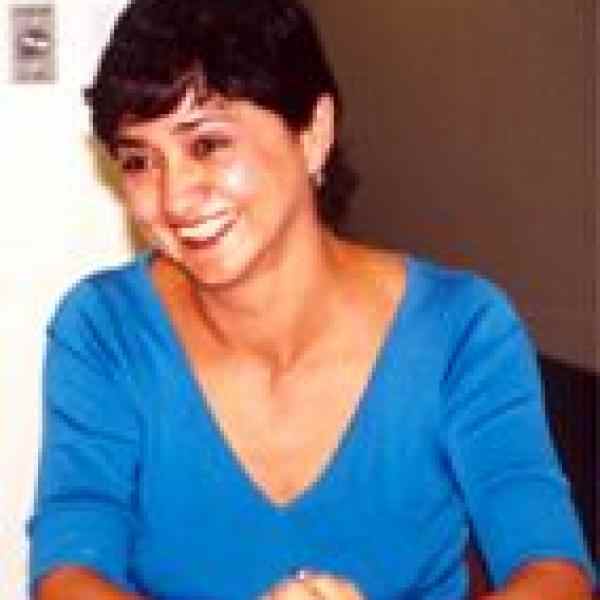Introdução
Marcia Siguenza's leadership training for women recognizes that they must also enjoy satisfying personal and family lives in order to be effective leaders.
A nova ideia
Marcia is addressing what she calls the "forgotten" aspect of leadership training: the cost to a woman's personal life. She believes that professional women are most successful if their personal lives are in balance, but existing programs fail to recognize this need. Marcia's program shows participants how the professional and personal aspects of their lives fit together. A systematic, structured self-analysis enables women to identify their goals and decide how they will achieve them. This enables them to better manage competing roles as mothers, wives, and citizens. Marcia's clients include indigenous women, community leaders, and politicians, through whom the program will spread to diverse groups of Ecuadorian women. Marcia aims to make her program a standard component of leadership training throughout the country and believes that it will improve female representation in government and business sectors.
O problema
Many Ecuadorian women are involved in community decision-making, but few enter the national political arena. Of the country's 214 mayors, only 2.8 percent are women; of city council members just 9.3 percent are women. One reason for this low representation is the inadequacy of training programs that do not teach women how to sustain their leadership positions. The training programs for women that do exist focus on business and politics, failing to incorporate personal responsibilities. They also promote the "superwoman" myth that assumes women can -- and should -- devote all their energy to their professional lives while still fulfilling their roles as mothers and wives. Making matters worse, an economic crisis has forced many men to migrate, leaving women to manage work and home on their own. In southern Ecuador, 34 percent of all households are headed by single women. With so many demands on women, Ecuador is unable to live up to its constitutional law mandating that all political parties must have a minimum of 20 percent female representation.
A estratégia
Several aspects of Marcia's program are already in place. She has enlisted a team of experts, including a community planner, sociologists, psychologists, communications experts, artists, and gender specialists. She also maximized time and resources by initiating the program at HabiTierra, a social development foundation that she helped found.Marcia begins with two sets of diagnostic exercises, each of which takes about a month to complete and involves a two day workshop. The first exercise explores personal aspirations, skills, qualities, and limitations. During the second month, women analyze their political and social environments and how their relationships with family members and others fit into those environments. Marcia and her team then guide the women in designing their own training for the remainder of the process. At this stage, the women decide how often they will meet, what type of exchanges they will have, what resources are needed, and which institutions they can call upon to support the process. In this way, participants develop specific skills, such as negotiation, planning, organizing, and proposal development. For example, one group created a specific agenda that spelled out their requirements with respect to health, living without violence, and work. The detailed agenda gave the women the confidence to approach local authorities with proposals to meet their needs.Throughout the program, Marcia uses interactive methods like drawing, game-playing, and presentations. She also invites successful women leaders to talk about their experiences in government and business, their thoughts on work, and how they achieve personal and professional balance in their lives. Marcia is creating a learning center, using HabiTierra as her program's central location. She has also acquired a radio production company to promote her work, and will distribute teaching materials through local organizations in the cities of Cuenca, Oña, Cañar, and Guayaquil. Several women's organizations, such as the Association of Ecuadorian Women Municipalistas, have expressed interest in incorporating Marcia's methods into their training activities. Further down the road, Marcia would like to incorporate training for men who will also benefit from self-discovery and reflection.
A pessoa
Marcia started working to abolish poverty in high school. During her last year of high school, Marcia received a scholarship from the American Field Service to study in the United States. When she returned to Ecuador, however, economic difficulties forced her mother to provide for the family and home on her own. Marcia remembers her mother's strength of character and her will to overcome hardships. She realized that all women share this potential. Marcia and her husband share a strong commitment to social change. Together they founded the HabiTierra Foundation, to which Marcia has added her own branch of women's programs. In 1994, Marcia participated in a project for Latin America conducted by the International Union of Local Authorities, which sought to improve women's leadership in managing community habitats, together with their local municipalities. In 1996, Marcia received a scholarship to attend a leadership workshop in Washington, D.C. Marcia was impressed by the influential women she met, and by the variety of professional positions they held. Shortly after her return to Ecuador, Marcia took over the direction of HabiTierra. Later she accepted an assignment with a World Bank team in Quito, away from her family. It was then that she began to develop the training program, after realizing that she, like many professional women, did not have enough time for her own personal needs and for her family.
